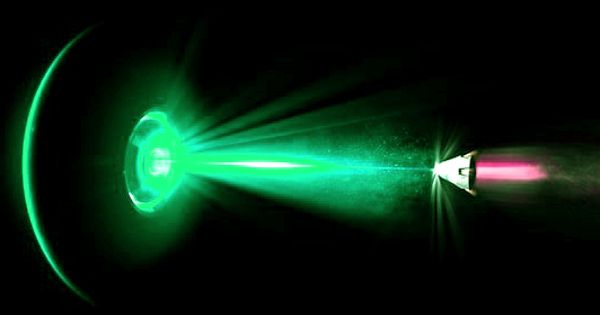Physicists have built a pumpkin-shaped nucleus that has set a new record for proton emission by having the shortest half-life ever observed for a proton emitter. An international team reports the half-life of a nucleus with proton emission, a rare type of radioactive decay in which an atom emits a proton, in Physical Review Letters. The half-life of such emission was estimated to be around 450 nanoseconds, the shortest of any proton emitting isotope ever observed.
Every known element has isotopes, or copies of itself with the same number of protons and electrons (so the chemistry is the same) but a different number of neutrons, which can influence its physical qualities by making it heavier or lighter. The nucleus’ radioactivity is also influenced by the quantity of neutrons present. Because protons are positively charged, they should oppose one another, making anything other than basic hydrogen impossible to produce. Nuclei, on the other hand, hold together thanks to neutrons and the strong nuclear interaction that exists between the quarks that make up protons and neutrons. At least for the time being.
Physicists have generated a rare isotope of lutetium in the latest finding. Because proton emission does not occur in naturally occurring isotopes, scientists must build some unusual nuclei. Lutetium has 71 protons and 104 neutrons in its most common isotope. The atom is not radioactive in this arrangement. Instead, the team employed a way to synthesize a Lutetium-149 isotope with only 78 neutrons. It is unstable due to the smaller number of neutrons. It also produces an unusual form. The nuclear forces drove the protons and neutrons into an oblate form, similar to that of a pumpkin.
This atom has produced 14 occurrences, according to the team. They claim that lutetium-149 is the most oblate proton emitter ever measured, as well as having the highest ground-state proton-decay energy. The physicists from the University of Jyväskylä’s Accelerator Laboratory generated the unusual isotope by firing nickel-58 atoms onto a narrow target of ruthenium-96. The lutetium-149 atoms were then placed in a silicon strip detector and analyzed. By generating a positron, the isotope of lutetium-149 decays into ytterbium-148, which is likewise radioactive but decays in the more usual beta decay (the positive anti-matter version of the electron).
The team now has a few options for future investigation. Gamma-rays could be used to investigate the characteristics of lutetium-149, although this will be difficult. They could also try making lutetium-148, which has a longer half-life. The current and future investigations will be valuable in putting proton emission models to the test in truly exotic atoms, and will lead to better models that can forecast nuclei properties.
















